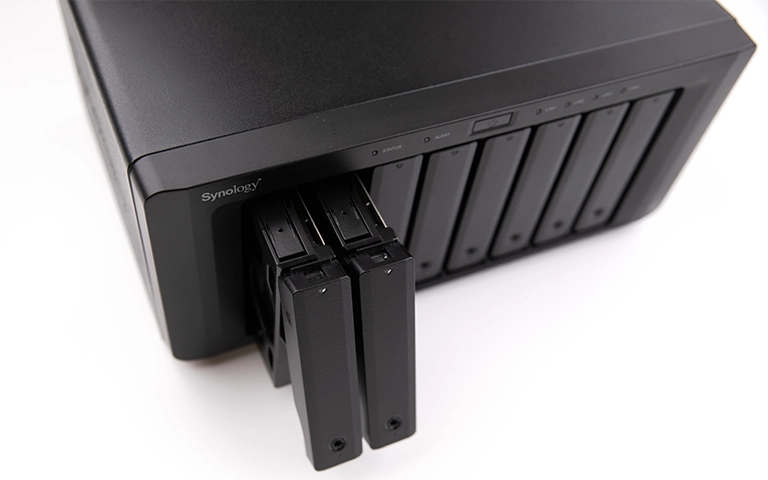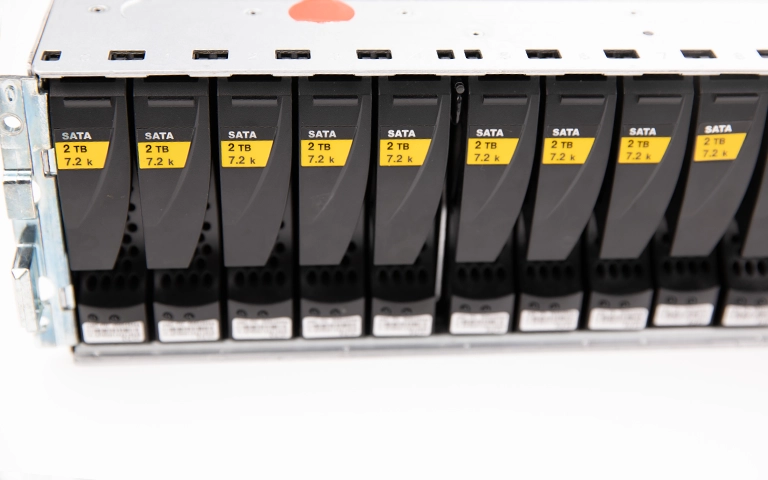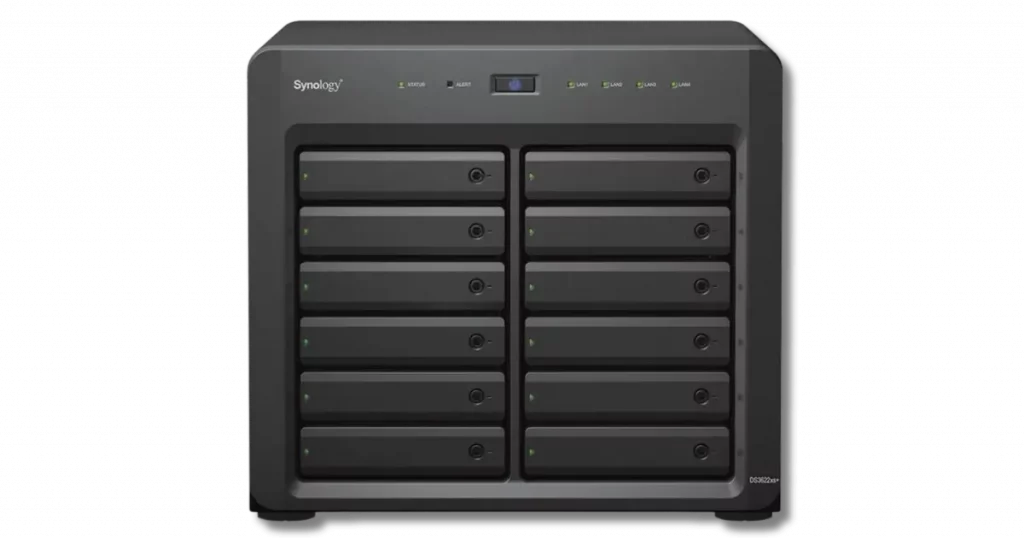When you rely on a NAS to safeguard critical files, unexpected data loss is the one scenario you want to avoid. Whether you are running SHR (Synology Hybrid RAID) or a traditional RAID configuration, it is vital to understand how each setup affects the recovery process.
At RAID Recovery Services, we specialise in retrieving data from failed Synology NAS units, RAID arrays, and hybrid storage environments.
This guide takes a recovery-first look at SHR vs RAID, explaining how each approach influences resilience, rebuilds, and your overall chances of restoring data successfully.

What is SHR? Synology Hybrid RAID in Data Recovery
SHR (Synology Hybrid RAID) is Synology’s proprietary storage technology, designed to simplify RAID management for less technical users. It automatically sets up redundancy and supports drives of varying capacities, providing greater flexibility and easier expansion than standard RAID.
From a data recovery perspective, however, SHR presents significant challenges:
Proprietary metadata structures make manual reconstruction far more complex
Mixed drive sizes complicate block alignment and parity rebuilds
SHR-2 offers dual-drive fault tolerance, but recovery in these cases is even more difficult to reverse-engineer in a lab
When an SHR array fails, conventional RAID recovery utilities are ineffective. Successful recovery requires specialist equipment and expertise to rebuild the storage structure and extract data safely.
What is RAID? Why It’s More Recovery-Friendly
Traditional RAID levels such as RAID 0, 1, 5, 6, and 10 use standardised algorithms to manage data and parity. These configurations are widely adopted in enterprise NAS solutions, servers, and larger storage systems.
From a data recovery standpoint, RAID offers several advantages:
RAID 1, 5, and 6 provide robust redundancy
Structures are consistent, well-documented, and easier to interpret
Recovery specialists can often emulate RAID layouts when metadata is damaged or missing
Established tools exist for rebuilding disk images and repairing parity
Overall, RAID is generally more straightforward to recover than SHR, particularly when identical drives are used and controller logs are available to verify the configuration.

SHR vs RAID: Which Is Easier to Recover?
NAS Failure Scenarios We Commonly Recover
We often handle cases such as:
Synology NAS systems that fail to mount after disk errors
Drives mistakenly removed during rebuild processes
Firmware or DSM updates that corrupt SHR metadata
Multiple drive failures in SHR-2 or RAID 5 arrays
Recovering from these scenarios typically requires a controlled cleanroom environment, binary-level disk imaging, and bespoke tools to reconstruct file systems and RAID logic.
You can learn more about how we approach these cases on our NAS data recovery service page.
Case Study: SHR-2 Recovery from a Failed 5-Bay Synology NAS
A client presented a Synology DS3622xs+ with five drives (a mix of 4TB and 6TB) configured in SHR-2. Following a power outage, the NAS failed to boot, and DSM flagged a volume error. The client’s IT team attempted a rebuild, but it was unsuccessful.
Key challenges included:
Two drives contained bad sectors
A DSM update had partially overwritten SHR metadata
Mixed drive sizes complicated data sequencing and parity mapping
Our engineers carried out full forensic imaging, reconstructed the parity layers, and successfully recovered around 95% of the client’s critical business data, including DICOM files and virtual machines.

Fast turnaround times for business-critical data
Which Setup Should You Choose for Data Protection?
For non-technical users or smaller businesses:
SHR offers simplicity and flexibility
Ideal for budget-conscious upgrades or mixed-capacity drives
More complex to recover in the event of failure
For enterprises or mission-critical systems:
RAID 5 or 6 delivers greater transparency and predictability
Easier to emulate and restore after a crash
Widely supported by enterprise-grade NAS platforms and recovery utilities
If your top priority is reliable and efficient recovery, traditional RAID remains the safer option.
Can You Recover Data from Failed SHR or RAID Arrays?
Yes. RAID Recovery Services provides specialist support for:
Synology SHR and SHR-2 storage systems
RAID 0, 1, 5, 6, and 10 arrays in QNAP, Dell, HP, and other platforms
Drives affected by firmware corruption, failed rebuilds, or mechanical issues
Systems that refuse to boot or report corrupted volumes
Our cleanroom engineers employ advanced RAID reconstruction methods and proprietary SHR recovery tools to restore inaccessible files safely and efficiently.

Need Help with NAS Data Recovery?
If your Synology NAS or RAID system has failed, our team can help. Contact RAID Recovery Services today to speak with a recovery specialist. We provide:
No-obligation diagnostics
A secure and controlled recovery environment
Emergency support available 24/7
Cleanroom and forensic recovery expertise
Trust the experts with proven results
Frequently Asked Questions
Can I recover data from a failed SHR NAS?
Yes, but it requires specialist knowledge of Synology’s proprietary structures.
Is SHR better than RAID for data recovery?
No. RAID uses standardised layouts that are more predictable and easier to rebuild.
How many drives can SHR-2 lose before data is unrecoverable?
SHR-2 can tolerate the failure of two drives. Beyond that, full recovery is unlikely.
What should I do if my NAS fails?
Shut down the NAS immediately. Avoid rebuild attempts, as these may overwrite data. Contact a professional recovery provider for safe handling.